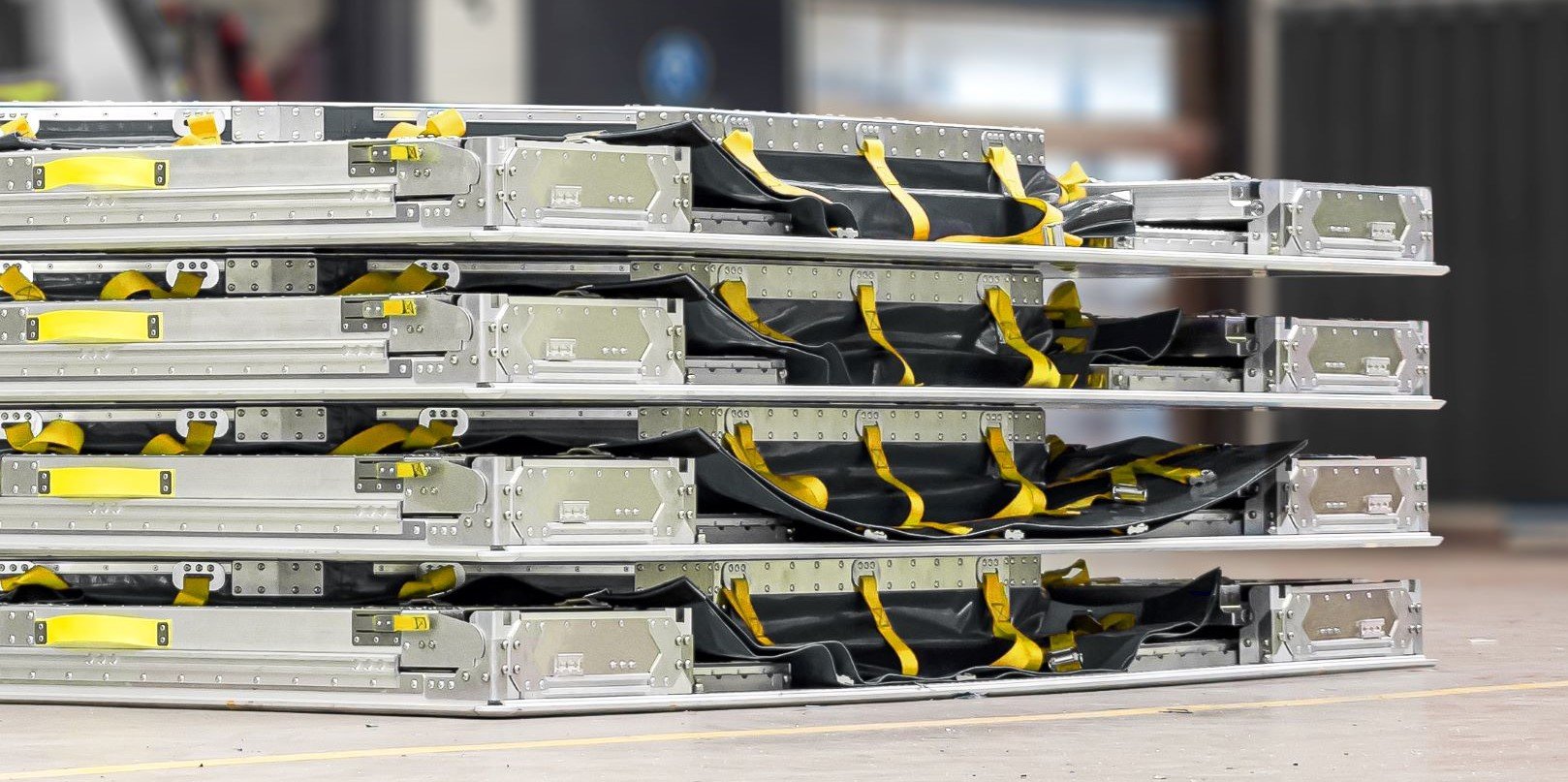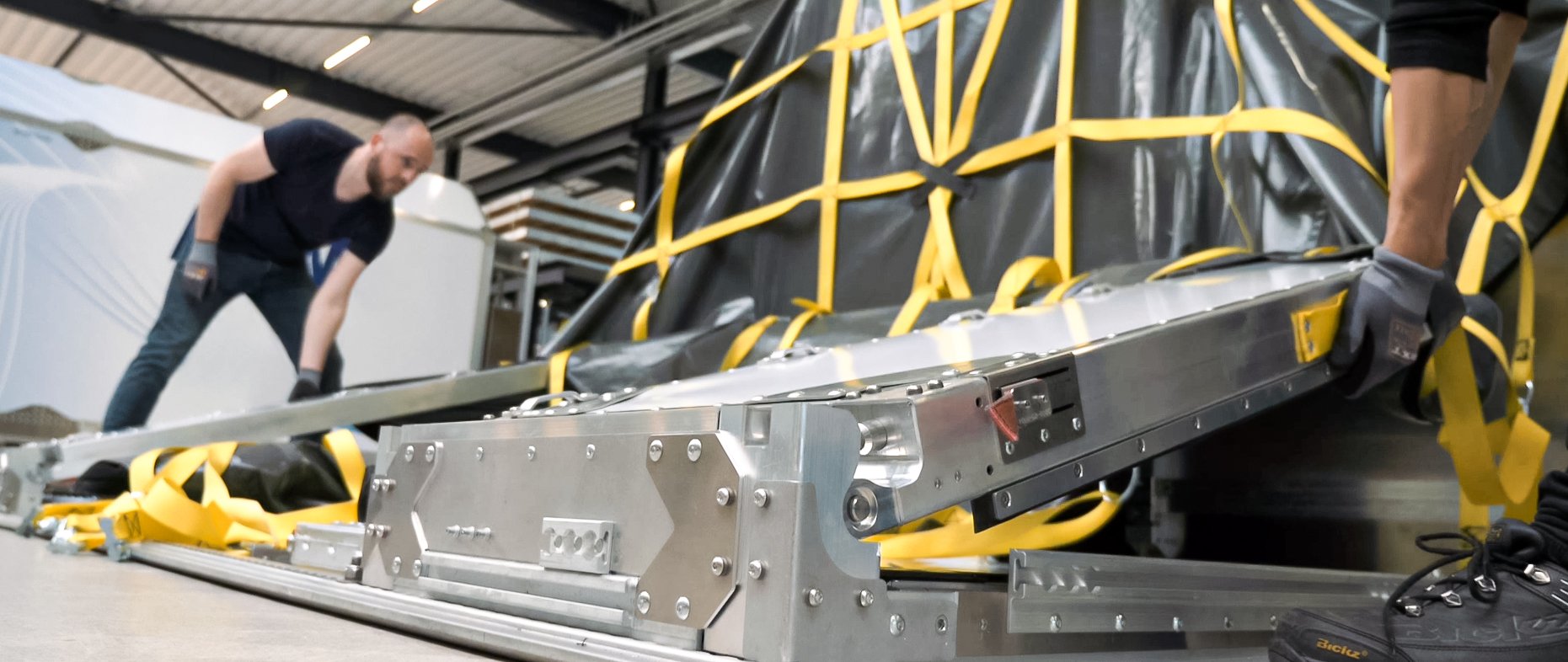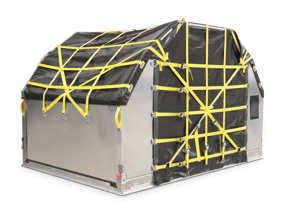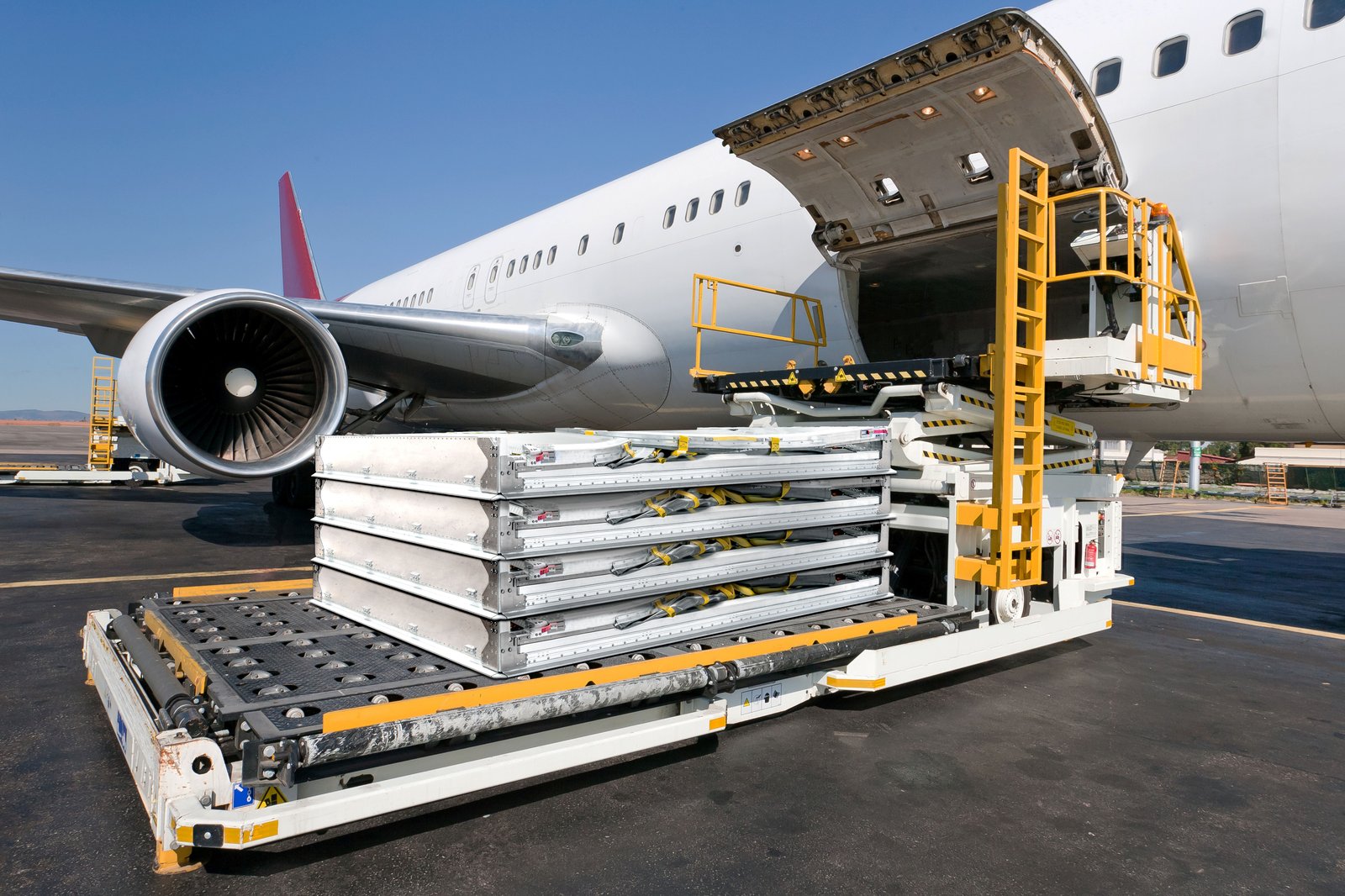Our AAY and AAX ULD collapsible containers solve a very real problem facing all ULD fleet managers: what to do with empty containers. Until now, they’ve had two options: store them where they may be needed later or return them unloaded. Some even go as far as buying spare containers as a back-up plan. It’s a familiar puzzle in the air cargo industry.
The first option isn't great, since ULD storage is expensive and limited. It also adds to the global imbalance in ULD stocks and doesn’t do a lot for ULD utilization rates, either. The second creates less deck space for full containers, and it has a negative impact on emission targets. Both choices hurt the bottom line.
But a collapsible ULD, which can reduce its size significantly when empty, now gives fleet managers a third option: use it on the outward journey as a standard container and then fold it and stack it for either ULD storage or repositioning at a greatly reduced price. It’s an attractive (and profitable) alternative. Even so, it may leave some wondering how easy it is to integrate into an existing fleet.
Want to see how the collapsibles can solve your operational challenges?
Before we look at above problem in a little more detail, we'd like to offer you this free infographic that will show you at one glance how you can solve even 4 important operational challenges with our certified collapsible containers.
Now you can have your containers exactly where you need them
The collapsible AAY is certainly unique. What’s more, it gives you the opportunity to drive supply chain efficiencies and contribute significantly to your company’s sustainability strategy. But is it difficult to operate and has its innovative design led to unacceptable compromises?
The short answer is “no”. According to VRR’s Sales & Engineering Manager Ben Lakerveld, the days of leaving your empty containers where you don’t want them (because an empty return flight is uneconomical or unsustainable) are behind you.
“We’ve spent many years researching and designing the collapsible AAY,” says Ben, “and we really had to push some engineering boundaries. But we said from day one that we wouldn’t compromise on the AAYs strength, weight, capacity or compatibility. After all, that’s what makes it so popular.”

Easy to operate and simple to stack
The collapsible AAY can be set up and folded down in seconds, making it exceptionally easy to handle and stack. When transported in its collapsed state, it has a height of only 255mm (10”) and can be stacked up to four units high on the main deck of a narrow-body aircraft, up to six high on the lower deck of a wide-body aircraft, and up to eight high in a 40ft shipping container.
“One of the aspects we’re really proud of is how simple it is to collapse,” adds Ben. “It takes just two people and one minute to do. You don’t even need any tools. Just open the locks, fold down the panels in sequence and ensure the cover and straps are neatly tucked in. Putting it back up is just as quick.”
Is special training required to handle the AAY? Apparently not. On the front of the container is a sticker with simple instructions. There’s also a QR code that takes you to a demonstration video. That sticker is always visible, even when the container is folded.
“We wanted to make sure that ground handlers wouldn’t have any problems,” says Ben. “There’s no point coming up with a technical solution if it’s too complicated to operate. Sure, they’ll have to set aside a couple of minutes erecting or collapsing each container. On the other hand, they’ll be saving themselves loads of repositioning time, so they gain more time than they lose.”

A certified container that guarantees airworthiness
The collapsible AAY is not only easy to operate. It’s also safe. During set up, each panel locks into place automatically. Handlers know when the lock is in place when the lock’s strap (coloured red for easy identification) is flush against the container’s surface. They also hear an audible click. These small but vital safety features ensure that all the panels are properly secured.
There are no concessions to cargo or aircraft safety either. First, no parts protrude from the container in its folded or unfolded state. Second, the collapsible version is just as watertight as the standard version. The standard pallet base even has drain holes to remove surface water.
“VRR’s collapsible AAY is the only collapsible air cargo container on the market to be fully certified,” Ben explains. “We’ve met every standard there is to ensure its complete airworthiness. We’ve even added sixteen internal seat-track points so that cargo can be strapped in.”
Same shape, same volume, same durability as the standard AAY
So, ease of use, personnel and aircraft safety, and cargo protection are covered. But what about cargo capacity and aircraft compatibility? The collapsible AAY has not only the same contour and base size as the standard AAY but also the same capacity. Well, almost. The collapsible version carries just 0.2 m3 less volume than the regular AAY container – a difference that’s negligible from an operational perspective.
Finally, there are the durability aspects to consider. Every ULD fleet manager wants containers that can withstand the rigours of air travel. Could a collapsible design reduce the AAYs reputation for durability and repairability?
Just like the standard AAY, the panels of the collapsible ULD are made of tough aluminium. For added protection during storage, plastic strips are attached to the upper surface of the rear panel. As for maintenance, the non-welded structure is straightforward to repair, and all moving parts are simple to replace. "The collapsible AAY can do everything that the standard AAY can do, and to the same standard,” concludes Ben. “But it can also help companies meet their efficiency and sustainability challenges. And that’s why we’ve made it as easy as ABC to integrate into an existing fleet. Fleet managers can use the two versions side by side and not worry about compatibility or usability issues.”
"The collapsible AAY can do everything that the standard AAY can do, and to the same standard,” concludes Ben. “But it can also help companies meet their efficiency and sustainability challenges. And that’s why we’ve made it as easy as ABC to integrate into an existing fleet. Fleet managers can use the two versions side by side and not worry about compatibility or usability issues.”
Looking for ways to maximise the efficiency of your ULD fleet?
Looking for ways to maximise the efficiency of your ULD fleet ánd ULD storage?
Learn more about the features and benefits of the collapsible AAY, then request a personalised quote from one of our sales engineers. In addition to the price, you’ll receive product specifications, a technical proposal and delivery times.












